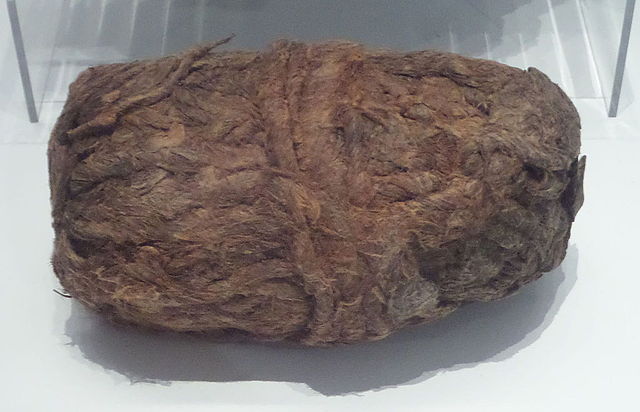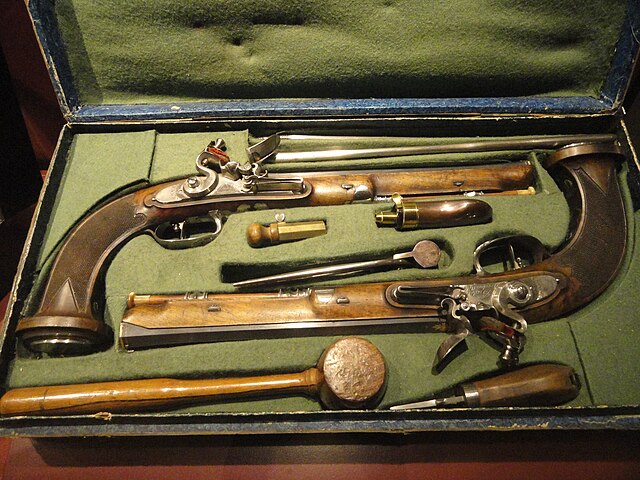"Brown Bess" is a nickname of uncertain origin for the British Army's muzzle-loading smoothbore flintlock Land Pattern Musket and its derivatives. The musket design remained in use for over a hundred years with many incremental changes in its design. These versions include the Long Land Pattern, the Short Land Pattern, the India Pattern, the New Land Pattern Musket, and the Sea Service Musket.
A Short Land Pattern Musket
Soldiers of the Black Watch armed with a musket (Brown Bess) and a halberd, circa 1790
X-ray of a Brown Bess musket recovered by LAMP archaeologists from an American Revolutionary War-era shipwreck from a ship lost in December 1782. It is believed to be a 1769 Short Land Pattern, and is loaded with buck and ball
A muzzleloader is any firearm in which the user loads the projectile and the propellant charge into the muzzle end of the gun. This is distinct from the modern designs of breech-loading firearms, in which user loads the ammunition into the breech end of the barrel. The term "muzzleloader" applies to both rifled and smoothbore type muzzleloaders, and may also refer to the marksman who specializes in the shooting of such firearms. The firing methods, paraphernalia and mechanism further divide both categories as do caliber.
A "Brown Bess" muzzle-loading musket, used by the British Army from 1722 to 1838
Loaded muzzleloading cannon. (1) Priming charge (2) Main propellant charge (3) Wadding (4) Projectile (5) Wadding
Wadding recovered from the wreck of the packet ship Hanover and was found inside a loaded cannon, National Maritime Museum Cornwall (2014)
A pair of French rifled, flintlock, duelling pistols by Nicolas Noël Boutet 1794–1797. Royal Ontario Museum, Toronto, Canada. The set of accessories includes a small hammer as rifled pistols used slightly oversized bullets; a hammer was needed to drive the bullet down the barrel when loading.






